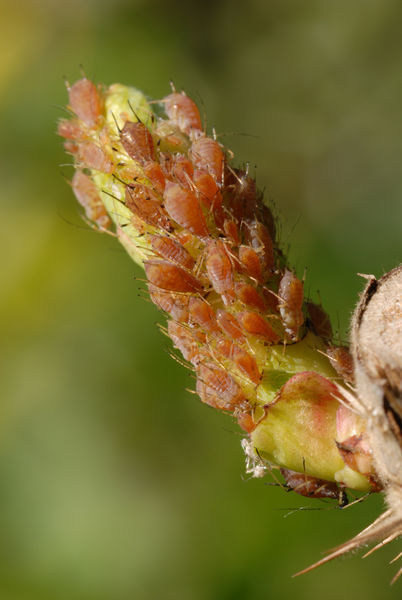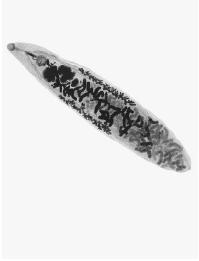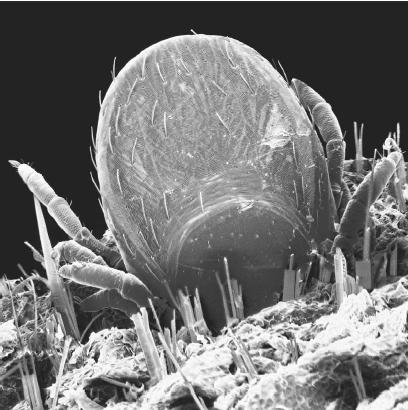Parasites and Parasitology - Real-life applications

Protozoa
They may be single-cell organisms, compared with the many millions of cells that make up the vastly more complex human body, but protozoa have been the cause of more human suffering and death than almost any category of disease-carrying organism. Intestinal protozoa are common throughout the world, particularly in areas where food and water sources are subject to contamination from animal and human waste. Like soldiers sneaking into a city disguised as civilians, protozoa typically enter the body while still in an in active state, thus getting around any defenses the immune system might put up against them. Protozoa in this in active state, encased in a protective outer membrane, are known as cysts. As cysts, they enter the gastrointestinal tract of the host before developing into a mature form that feeds and reproduces.
Other types of parasitic protozoa infect the blood or tissues of their hosts. These protozoa typically enter the host through a vector. Often the vector is an invertebrate (an animal without an internal skeleton), such as an insect, that feeds on the host and passes the protozoan on through the bite wound. The effects that protozoan parasites can have on human bodies range from no symptoms to extreme ones. Some victims of Trichomonas vaginalis, known colloquially as trick, are asymptomatic, meaning that they show no obvious symptoms of their condition. It is an STD, or sexually transmitted disease, for which men are typically carriers, passing it on to female sexual partners. Males do exhibit some symptoms, but usually it is the female who experiences the worst symptoms of the infection, including a burning sensation when urinating, genital itching, and a white discharge. When such pain is not present, the disease can be detected only by finding the trophozoites (protozoa in a feeding stage, as opposed to a reproductive or resting stage) in secretions within the victim's genital tract.
INTESTINAL PROTOZOA.
A classic intestinal protozoan is Giardia lamblia. Like all unicellular organisms, it is extremely small, with a length of about 15 microns, or micrometers, equal to about 0.00059 in. It has a teardrop shape with two nuclei on either side of a rod called an axostyle, and under a scanning electron microscope the nuclei look like eyes separated by a nose. For this reason, people who have glimpsed G. lamblia under such magnification have reported the decidedly unsettling sensation of a microorganism "staring back at them."
These protozoa carry a condition known as giardiasis. As cysts, they pass through the feces of one host and enter the body of the next through contaminated food or water. The resulting symptoms can range from nothing to severe diarrhea. Not surprisingly, giardiasis is fairly common in developing countries, where open sewers commonly run through the city streets. Also, there are places in the third world where farmers use human feces as a fertilizer, another significant source of infection. Yet giardiasis is not simply an affliction of people in developing nations; rather, the ease with which the pathogen can contaminate water supplies makes it a condition known the world over. Even in the United States and other industrialized nations, G. lamblia may find its way into water supplies when waste-disposal systems are placed too close to wells. Campers who unwisely drink water from mountain streams also may contract giardiasis, which may come from beavers—hence the nickname "beaver fever," which is sometimes given to giardiasis contracted in the wild.
Far more notorious and destructive is Entamoeba histolytica, carrier of amoebic dysentery. The process of infection is much the same as with G. lamblia, but once E. histolytica enters the host's body, it can wreak considerably more damage. In most cases, the parasite causes only diarrhea and relatively minor gastrointestinal problems, but it can bring about a rupture of the gastrointestinal tract (the stomach and intestines). Trophozoites may even pass into the circulatory system or other organs, such as the liver, and amoebic dysentery can be fatal.
BLOOD INFECTIONS.
Among the most significant protozoan blood infections is African trypanosomiasis, or "sleeping sickness." The parasite enters humans through the bite of the tsetse fly, a bloodsucking pest that serves as vector for the Trypanosoma genus of parasites. The result is fever, inflammation of the lymph nodes (masses of tissue at certain places in the body that filter blood), and various negative effects on the brain and spinal cord that bring about extreme lethargy or tiredness—hence the name. Sleeping sickness, prevalent throughout central Africa, is frequently fatal.
Still worse is the disease carried by the Plasmodium genera: malaria, which has been described at the leading health problem in the world today. It is estimated that more than two billion people live in regions where malaria is endemic (native), that the number of persons infected may be as high at 750 million, and that as many as three million people die of the disease each year. Four species of Plasmodium, borne by mosquitoes, are capable of infecting humans and causing malaria. P. falciparum is the most dangerous of the four strains; it can kill a healthy adult in 48 hours.
Inside the human host, the parasite finds a home in the red blood cells, where it reproduces until the cell bursts, spreading more parasites throughout the blood. These new parasites infect and destroy more red blood cells. As a new generation of parasites bursts from the blood cells, the body tries to defend itself by causing a fever, which does destroy many (but not all) of the pathogens. Scientists have developed several chemical antidotes to malaria; unfortunately, strains of pathogen resistant to these antidotes are on the rise in various parts of the world.
Worms
The protozoa we have discussed up to this point, as well as the conditions that they carry, are far from pleasant. But the many species we examine under the general heading of "worms" are vastly more disgusting, if that is to be believed. It should be stated that much of what follows is not for those of weak stomach and probably should not be read while eating.
In contrast to protozoa, worms are relatively complex, large creatures with fairly long life spans. For example, the genera Schistosoma, or blood flukes, average 0.4 in. (10 mm) in length, while Clonorchis sinensis (Chinese, or oriental, liver fluke) may attain lengths of about 1 in. (25 mm). Additionally, they can live for very long spans of time: a blood fluke (fluke is simply a more common way of designating a nematode, a type of worm) may last as long as 30 years.
During that time, a female blood fluke can produce several hundred eggs a day. Blood flukes are one of the few worm species in which the sexes are separate; most worms are hermaphrodites, or both male and female. This brings up another distinction between worms and protozoa: the fact of sexual reproduction. From this follows yet another distinction, the involvement (typically) of one or more intermediate hosts as well as a definitive host, in whose body sexual reproduction takes place.
Flukes and other worms can be as destructive as many of their protozoan counterparts. Blood flukes, for instance, kill some one million people a year by inflaming tissues and causing organs, including the liver and small intestine, to cease functioning. Oriental liver flukes, so named because they are common throughout eastern Asia, pass through the bodies of snails (first intermediate host) to fish (second intermediate host) and ultimately to humans (definitive host), who are infected by eating raw or undercooked

TAPEWORMS AND THE DANGERS OF UNDERCOOKED MEAT.
There are numerous species of tapeworm, which may be as long as 50 ft. (15 m). Their bodies are made up of segments called proglottids, which contain male and female sexual organs and which house their eggs. Proglottids break off, usually into the feces of the host, thus enabling the spread of the tapeworm. One variety, Dipylidium caninum (cucumber tapeworm), uses dogs or cats as a definitive host, entering the body when the animal ingests a flea or louse, which serves as an intermediate host. Several varieties of worm can enter the body through improperly cooked pork. This is a testament to the wisdom of the injunctions against eating pork in the Old Testament and Koran, which were written for peoples in a world without refrigeration or sophisticated medical knowledge.

The Taenia genus of tapeworm includes T. solium, the pork tapeworm, which has been known to crawl out of the anus of an infected human. Another worm often found in under-cooked pork is Trichinella spiralis, which brings about the condition known as trichinosis. The latter disease is rarely fatal, but it can cause extreme discomfort, characterized by sore, tender muscles. Thanks to enhanced efforts at meat inspection, the incidence of trichinosis in U.S. pigs has dropped to less than 1%. Nonetheless, it is still quite possible to ingest the parasite from eating undercooked game, particularly bear.
WORMS THAT AFFLICT LARGE POPULATIONS.
Hookworms such as Necator americanus afflict more than a billion people as well as untold numbers of dogs and cats. In fact, one of the ways that the parasites spread is through human exposure to dog and cat feces. Some hookworms can produce as many as 25,000 eggs a day, wreaking havoc on the host, on whose blood the hookworms depend for sustenance. As its name implies, N. americanus is found in the New World, and was a widespread affliction throughout the southeastern United States during the early part of the twentieth century. Another common species, Ancylostoma duodenale, is found in southern Europe, northern Africa, northern Asia, and parts of South America.
Pinworms, carriers of a condition known as enterobiasis, are also common in the United States, and in much of the world as a whole. They primarily afflict preschool and school-age children who live in crowded conditions, though adults can often contract enterobiasis as well. Pinworms infect about half as many people as hookworms, but the effects can be extremely painful, especially because they are felt in the perianal skin, or the skin around the anus, and (for adult women) in the genitals. The eggs hatch on the perianal skin, which causes it to itch, but if the victim scratches the area, this can cause additional bacterial infections. The affliction of pin-worms can be especially severe for children, who often experience irritability, insomnia, restlessness, and other behavioral changes. They are highly contagious and can contaminate nonliving surfaces such as bed linens and carpets; therefore, if one family member is infected, the whole family usually must receive treatment. Drugs for treating pinworm are sold either as prescription or over-the-counter drugs, and treatment usually involves two doses over the course of two weeks.
Ascaris lumbricoides, or intestinal roundworms, may infect as much as one-fourth of the world's population. Affected areas are mostly in the third world, though in the United States, an estimated 10,000 cases of roundworm infection—frequent in dogs and cats—occur in humans. The roundworm pathogen goes through a strange life cycle inside the human body, hatching in the small intestine and making its way into the air passages, only to be swallowed and returned to the small intestine. It can cause a fluid buildup in the lungs, resulting in what is known as ascaris pneumonia, an often fatal disease. As with T. solium, the intestinal roundworm has been known to escape the body, though in an even more shocking way. Because it is very sensitive to anesthetics, the parasite may evacuate the body of a patient in a surgical recovery room by moving from the small intestine to the stomach and out the nose or mouth.
OTHER WORMS.
Several other worms have been associated with various diseases

Found in central Africa and parts of Asia, Wuchereria bancrofti is carried by mosquitoes and causes a condition known as elephantiasis. The parasite makes its way to the lymph nodes, particularly those that drain lower parts of the body, and brings about grotesque swelling, usually in the legs and genitals. (Visitors to the "Parasites and Parasitological Resources" Web site of Ohio State University's College of Biological Sciences, will find links to photographs of elephantiasis victims. It should be noted that these images include grotesquely swollen male genitalia and may be too graphic for some viewers.)
Arthropods
After the preceding discussion of worms, mere insects and other arthropods probably will not have the same power to disgust the reader asthey otherwise might have had. This is particularly so because most arthropods are ectoparasites, and not as many of them are associatedwith diseases. This is not to say that arthropodparasites are anything pleasant or that they couldbe described as upstanding citizens of the biological world—only that, compared with worms, they are not quite so revolting.
Certainly many insect parasites, such as mosquitoes (genus Anopheles ), are notorious vectors. Of the 400 or so mosquito species, about a dozen carry malaria, and many others transmit canine heartworm. Some parasites are known as mechanical, as opposed to biological, vectors. This means that they may happen to carry cysts of protozoa, or worm eggs, on their exteriors, but they do not serve as the biological carrier of any disease. Such is the case with the American cockroach ( Periplaneta americana ). But one thing unites all insect parasites: they are pests, and if any of their species ever became endangered (something that is not likely to happen), very few people would be upset.
ARTHROPODS THAT CAUSEITCHING.
The bedbug (genus Cimex ) is an insect parasite that is not known to serve as a vector, either mechanical or biological, for any disease—yet it certainly gives rise to more than its share of misery. Like many another arthropod parasite, it causes its hosts to itch. Most familiar from the old saying "don't let the bedbugs bite," bedbugs live not only in beds but also in clothing, furniture, laundry, and numerous other areas around a house. And though they depend on human blood, it does no good simply to vacate a house for a few days in the hope of starving them; they can survive for up to year on the blood supplies they have stored in their bodies.
Then there are body lice ( Pediculus humanus ) and pubic, or crab, lice ( Phthirus pubis ). Although people may tend to associate the problem of lice with the poor, lice afflict all socioeconomic classes. Body lice, as their name indicates, spread all over the body and particularly the head, while crab lice nest either in the pubic area or anywhere else they can find short, thick hair: armpits, eyebrows, eyelashes, beards, sideburns, and mustaches. Other than inducing itching, most lice do not pose a serious threat—unless they happen to be carrying typhus or other diseases.
Other insect parasites known to cause itching are cat and dog fleas ( Ctenocephalides felis and C. canis, respectively), which may carry the cucumber tapeworm we discussed earlier. Sand fleas ( Tunga penetrans ) are not associated with any disease, but by causing hosts to scratch, they can bring about secondary infections, and they become so firmly attached to the host that they usually require surgical removal.
Like the insects we have described, most arachnid parasites also produce itching. Among these parasites are several varieties of tick, which can serve as vectors for bacterial infections, such as Rocky Mountain spotted fever. Tick species such as Ixodes dammini in the northeastern United States carry Lyme disease, named after the town in Connecticut were it was first identified in 1975. Effects of Lyme disease can range from itching to severe neurological disorders. There are also several varieties of mange mites, among them Sarcoptes scabiei, which afflicts humans and animals with scabies, characterized by severe skin inflammation and itching.
WHERE TO LEARN MORE
Berenbaum, May. Bugs in the System: Insects and Their Impact on Human Affairs. Reading, MA: Addison-Wesley, 1995.
"Biology 160, Animal Behavior: Symbiosis and Social Parasitism." Department of Biology, University of California at Riverside (Web site). <http://www.biology.ucr.edu/Bio160/lecture25.html> .
Knutson, Roger M. Furtive Fauna: A Field Guide to the Creatures Who Live on You. New York: Penguin Books, 1992.
Lembke, Janet. Despicable Species: On Cowbirds, Kudzu, Hornworms, and Other Scourges. New York: Lyons Press, 1999.
Parasites and Parasitism. University of Wales, Aberystwyth (Web site). <http://www.aber.ac.uk/parasitology/Edu/Para_ism/PaIsmTxt.html> .
Parasites and Parasitological Resources. Ohio State University College of Biological Sciences (Web site). <http://www.biosci.ohio-state.edu/~parasite/home.html> .
Trager, William. Living Together: The Biology of Animal Parasitism. New York: Plenum Press, 1986.
The World of Parasites (Web site). <http://martin.parasitology.mcgill.ca/jimspage/worldof.htm> .
The World Wide Web Virtual Library: Parasitology (Web site). <http://www.aan18.dial.pipex.com/urls.htm> .
Zimmer, Carl. Parasite Rex: Inside the Bizarre World of Nature's Most Dangerous Creatures. New York: Free Press, 2000.